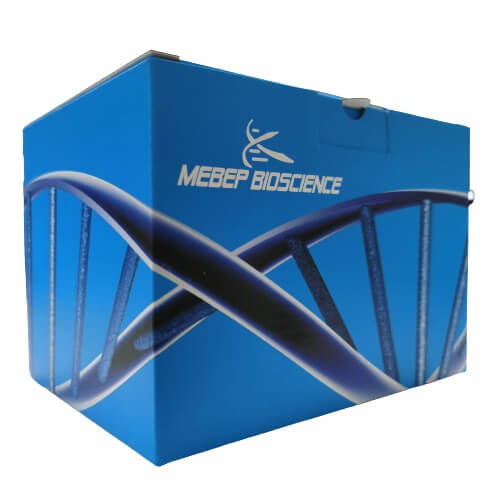
Human β -amyloid protein 1-42 detection kit (magnetic particle chemiluminescence method)
2025-07-11
Marburg virus nucleic acid detection kit (fluorescence PCR method)
2025-07-11Human Phosphorylated Tau-217 Protein Assay Kit (Magnetic Particle Chemiluminescence Method)
Mail to us
Product Number: DTK581
Shipping and Storage
- Unopened reagents, calibration samples, and quality control samples are stored at 2℃ to 8℃ with a validity period of 12 months;
- After opening the reagent, be careful to store it away from light and avoid contamination. It can be stored for 28 days at 2℃ to 8℃. Calibration and quality control products can be stored in the dark at 2℃ to 8℃ after reconstitution, and can be stored for 28 days.
- Please place the reagent kit vertically to ensure that the magnetic particles are fully effective during the automatic mixing process before use.
- The production date and expiration date can be found on the product label.
Component
- Specification 1:
| Reagent | Component | Concentration |
| Reagent 1 (R1) | Biotin labeled human phosphorylated Tau-217 protein antibody | 0.5mg/L |
| TRIS buffer solution | 100mmol/L | |
| Preservative | 0.1% | |
| Reagent 2 (R2) | Acridine ester labeled human phosphorylated Tau-217 protein antibody | 0.5mg/L |
| PBS buffer solution | 100mmol/L | |
| Preservative | 0.1% | |
| M | Streptomycin coated magnetic particles | |
| PBS buffer solution | 100mmol/L | |
| Preservative | 0.1% |
Calibration standards: recombinant antigen of human phosphorylated Tau-217 protein, calf serum, preservatives;
Quality control products: recombinant antigen of human phosphorylated Tau-217 protein, calf serum, preservatives;
Note: The components of different batch numbers of reagent kits cannot be interchanged.
- Specification 2:
| Reagent | Component | Concentration |
| Magnetic particles (M) | Magnetic particle coated human phosphorylated Tau-217 protein antibody | 0.5mg/L |
| TRIS buffer solution | 100mmol/L | |
| Preservative | 0.1% | |
| Reagent (R) | Acridine ester labeled human phosphorylated Tau-217 protein antibody | 0.5mg/L |
| PBS buffer solution | 100mmol/L | |
| Preservative | 0.1% |
Calibration standards: recombinant antigen of human phosphorylated Tau-217 protein, calf serum, preservatives;
Quality control products: recombinant antigen of human phosphorylated Tau-217 protein, calf serum, preservatives;
Note: The components of different batch numbers of reagent kits cannot be interchanged.
Calibration and quality control products have batch specificity, and the specific concentration is obtained through the calibration curve card. Traceability of product calibration standards to internal working calibration standards within the enterprise
Required but not provided materials: pre excitation solution, excitation solution, cleaning solution, reaction cup, etc. for fully automated chemiluminescence immunoassay system.
Application
Used to detect the content of human phosphorylated Tau-217 protein (p-Tau-217) in human serum and plasma, it is mainly used as an auxiliary diagnosis for Alzheimer's disease in clinical practice.
Specimen collection
- Serum samples collected in standard test tubes or vacuum tubes with separation gel.
- The human phosphorylated Tau-217 protein sample should be tested immediately after collection, and serum samples can be stable for 2 days at 2℃ to 8℃; If samples need to be stored for a long time, it is recommended to freeze them at -20℃ or below. They can be stored at -20℃ for 1 month to avoid repeated freezing and thawing, and the number of freezing and thawing should not exceed 3 times.
- If there is sediment in the sample, please centrifuge before testing.
- The following samples cannot be used: Heat inactivated specimens; Severe hemolysis, high blood lipid samples; Mixed samples; Samples clearly contaminated by microorganisms.
- Before testing, please ensure that patient samples, calibrators and quality control products are balanced to room temperature (20℃~25℃) to avoid foam.
- Considering the possible evaporation effect, the samples, calibration samples, and quality control samples on the machine should be measured within 2 hours.


